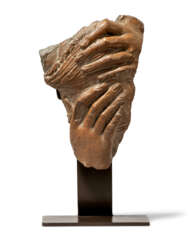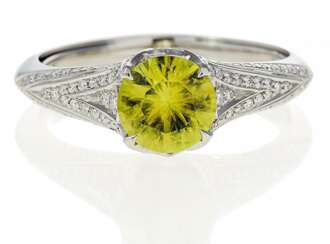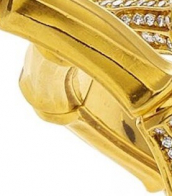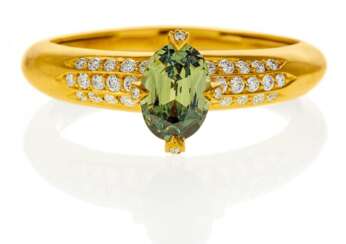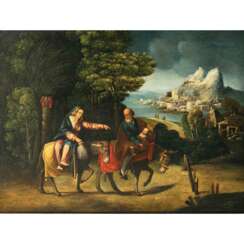kat florence


Giuseppe Piattoli the Younger was an Italian painter and engraver, active mainly in Florence.
There are works by Servolini in the church of Santa Maria Maddalena dei Pazzi. He engraved a series of the Miracles of the miracles of the 16th-century Dominican mystic Bartolomea Bagnesi. He was appointed by Grand Duke of Tuscany, Peter Leopold to posts at the Real Galleria and the Accademia di Belle Arti of Florence.


Donato di Niccolò di Betto Bardi, better known as Donatello, sculptor of the Renaissance period. Born in Florence, he studied classical sculpture and used this to develop a complete Renaissance style in sculpture. He spent time in other cities, and while there he worked on commissions and taught others; his periods in Rome, Padua, and Siena introduced to other parts of Italy his techniques, developed in the course of a long and productive career. Financed by Cosimo de' Medici, Donatello's David was the first freestanding nude male sculpture since antiquity.
He worked with stone, bronze, wood, clay, stucco, and wax, and had several assistants, with four perhaps being a typical number. Although his best-known works mostly were statues in the round, he developed a new, very shallow, type of bas-relief for small works, and a good deal of his output was larger architectural reliefs.


Massimiliano Soldani or Massimiliano Soldani Benzi was an Italian baroque sculptor and medallist, mainly active in Florence. Soldani developed into one of the finest bronze casters of his time in Europe. Though first specialising as a medallist, Soldani also produced bronze reliefs, bronze vases and free-standing figures and busts.




Valerii Nikolaevich Koshliakov (Russian: Валерий Николаевич Кошляков) is a Russian painter, graphic artist, author of installations, lives and works in Germany, France and Moscow.
He studied at the Rostov Grekov Art School. Koshliakov works mainly with images of architecture, which in his works appears as a memory of the former greatness. The artist uses canvas, paper, kraft, but most often cardboard, pieces of which make up huge canvases and entire installations. On this basis with diluted colors he creates a very light, yet monumental painting, which imbues the material with a web of sweat, reflecting the author's unique vision.
The works of this successful artist are in the collections of the world's major museums, including the Tretyakov Gallery, the Guggenheim Museums in New York and Bilbao.


Valerii Nikolaevich Koshliakov (Russian: Валерий Николаевич Кошляков) is a Russian painter, graphic artist, author of installations, lives and works in Germany, France and Moscow.
He studied at the Rostov Grekov Art School. Koshliakov works mainly with images of architecture, which in his works appears as a memory of the former greatness. The artist uses canvas, paper, kraft, but most often cardboard, pieces of which make up huge canvases and entire installations. On this basis with diluted colors he creates a very light, yet monumental painting, which imbues the material with a web of sweat, reflecting the author's unique vision.
The works of this successful artist are in the collections of the world's major museums, including the Tretyakov Gallery, the Guggenheim Museums in New York and Bilbao.


Giovanni del Biondo, an Italian painter active in the 14th century, was a distinguished figure in the vibrant tapestry of medieval art. Originating from Florence, he was known for his devout religious paintings that adorned many churches and sacred spaces throughout Italy. His specialization in altarpieces and frescoes captured the essence of divine narratives with a profound sense of piety and devotion.
Del Biondo's art is celebrated for its meticulous attention to detail, vibrant colors, and the emotional depth of its subjects. He had a unique ability to convey complex theological themes through his works, making them not only visually stunning but also spiritually enriching. His contributions to the Gothic style of painting helped pave the way for the forthcoming Renaissance by infusing traditional religious art with a new sense of naturalism and humanism.
Among his known works, the altarpieces depicting scenes from the life of Christ and the Virgin Mary are particularly noteworthy. These masterpieces, housed in museums and churches across Europe, continue to captivate art lovers with their elegance and intricacy. Giovanni del Biondo's legacy as a master painter lies in his ability to transcend the boundaries of time, inviting viewers into a contemplative dialogue with the divine.
For collectors and experts in art and antiques, Giovanni del Biondo represents an intriguing chapter in the history of art. His works offer a glimpse into the spiritual and artistic aspirations of medieval Florence, providing a rich field for exploration and appreciation.
To stay informed about the latest discoveries, exhibitions, and auction events featuring Giovanni del Biondo's works, signing up for updates is essential. This subscription will ensure that enthusiasts and collectors alike are always at the forefront of new opportunities to engage with the art of this medieval maestro.


Giovanni del Biondo, an Italian painter active in the 14th century, was a distinguished figure in the vibrant tapestry of medieval art. Originating from Florence, he was known for his devout religious paintings that adorned many churches and sacred spaces throughout Italy. His specialization in altarpieces and frescoes captured the essence of divine narratives with a profound sense of piety and devotion.
Del Biondo's art is celebrated for its meticulous attention to detail, vibrant colors, and the emotional depth of its subjects. He had a unique ability to convey complex theological themes through his works, making them not only visually stunning but also spiritually enriching. His contributions to the Gothic style of painting helped pave the way for the forthcoming Renaissance by infusing traditional religious art with a new sense of naturalism and humanism.
Among his known works, the altarpieces depicting scenes from the life of Christ and the Virgin Mary are particularly noteworthy. These masterpieces, housed in museums and churches across Europe, continue to captivate art lovers with their elegance and intricacy. Giovanni del Biondo's legacy as a master painter lies in his ability to transcend the boundaries of time, inviting viewers into a contemplative dialogue with the divine.
For collectors and experts in art and antiques, Giovanni del Biondo represents an intriguing chapter in the history of art. His works offer a glimpse into the spiritual and artistic aspirations of medieval Florence, providing a rich field for exploration and appreciation.
To stay informed about the latest discoveries, exhibitions, and auction events featuring Giovanni del Biondo's works, signing up for updates is essential. This subscription will ensure that enthusiasts and collectors alike are always at the forefront of new opportunities to engage with the art of this medieval maestro.


William Shakespeare was a British poet and playwright and writer.
William's father, John Shakespeare, was a merchant and official in Stratford. There are reports that he was a sailor for a time before joining a theater company in London. Beginning in the 1590s, Shakespeare began writing plays, and in 1593 he published a poem, Venus and Adonis, which became popular. He dedicated it to the Duke of Southampton, who was a philanthropist and patron of talent, and soon his business was booming.
From 1592 to 1600 Shakespeare wrote his dramas and romantic comedies "Richard III", "The Taming of the Shrew", "Romeo and Juliet", "A Midsummer Night's Dream" and "The Merchant of Venice", as well as the comedies "Much Ado About Nothing", "Twelfth Night" and the tragedy "Julius Caesar". The playwright's business was so successful that he even bought a large house in Stratford. In 1599, Shakespeare became one of the owners, playwright and actor of the new theater "Globe". In 1603 King James took Shakespeare's troupe under his direct patronage. In the mature period, the great playwright turned to tragedies, there were "Hamlet", "Othello", "King Lear", "Macbeth" and others.
Although in the 19th century researchers had some doubts about the authorship of many of these works, William Shakespeare is considered the greatest English playwright, one of the best playwrights in the world. His plays have been translated into all major languages and to this day form the basis of the world theatrical repertoire, most of them have been screened many times. According to the Guinness Book of Records, Shakespeare remains the world's best-selling playwright, and his plays and poems have sold more than 4 billion copies in the nearly 400 years since his death.


Sir William Douglas Hamilton was a British diplomat, archaeologist and volcanologist, a famous collector, and a Fellow of the Royal Society of London.
He served as British Ambassador to the Kingdom of Naples from 1764 to 1800, but most importantly, he was a passionate researcher of history, art and natural sciences and was a member of the Society of Dilettantes, established for the purpose of studying ancient art.
In Naples, Hamilton amassed a unique collection of antique vases and published an illustrated book about them. In parallel, Sir Hamilton studied the volcanoes Vesuvius and Etna, local volcanic and seismic activity, and the causes of earthquakes in the Neapolitan territory. As a corresponding member of the Royal Society, he sent the results of his research to London. His publications were very valuable for the time.















